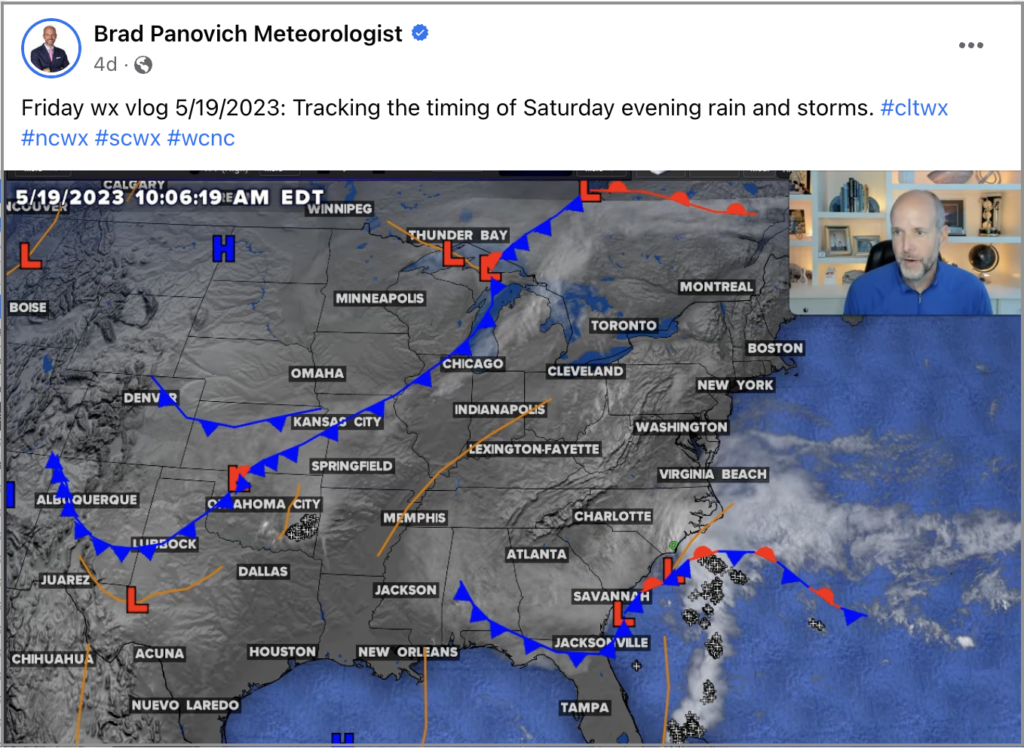Mastering Customer Service on Social Media: Tips for TV Newsrooms

Most of those working on-air in television newsrooms today are active on social media. Station managers encourage and sometimes require regular updates on Facebook, Twitter, Instagram, and other platforms. It’s a way to connect with consumers who might not be watching TV. “We need to fish where the fish are biting,” a news manager once told me.
Although social media platforms are making it harder and harder to gain traction and engagement with unpaid posts, it’s still an excellent way to promote the television station and build the personal brand of the people who work there.
Reporters often share a few details about stories they are working on, while updates from the weather team usually include the forecast and severe weather information. Pictures and videos of the news team and their families in the community are also popular.
Another social media strategy that works well for other businesses and that television stations should consider is using social media to provide customer service.
Case Study: WxBrad
Follow Brad Panovich on social media, and you’ll almost always get a fresh weather update from him, no matter when you check your timeline or newsfeed. Panovich is the Chief Meteorologist at WCNC in Charlotte, NC. While most broadcast meteorologists post a few times a day, Panovich posts a few dozen times a day.

“I post daily, for sure,” Panovich told me. “I average about 6-16 times a day on Facebook, usually 16 times a day on Twitter, and an Instagram story every day as well.”
For many broadcast meteorologists, maintaining social media accounts is written into their contract with the television station. You get the sense from Panovich that he’s active on social media because it’s his mission. He genuinely enjoys serving his community of followers.
“Just like on TV, you have to be there when severe or impactful weather is happening,” he says.
It’s all about customer service.
Today, 80% of consumers use social media to engage with brands. Some of that engagement is a quick like or comment on an outgoing post from the company. However, some of the engagement includes incoming messages from consumers directed toward the company. And if the company doesn’t respond, 30% say they will go to a competitor.
Big companies like Southwest Airlines, Chick-fil-a, and Hertz have a team dedicated to providing excellent customer service on social media. Most televisions, however, don’t have a social media department. It falls on individual reporters and on-air talent to provide engaging content while monitoring their accounts and responding to questions, comments, and concerns from viewers and followers.
Here are 3 ways local television newsrooms can use social media to provide excellent customer service:
Amaze and Delight
You can’t appear in followers’ news feeds or timelines unless you post engaging content. And research shows the social media posts that generate the most engagement have one thing in common: they create awe.
In the book, Contagious: Why Things Catch On, Jonah Berger writes that content that creates a sense of wonder and amazement is more likely to be shared. “Consider the old news adage ‘If it bleeds, it leads’,” he writes. “You could also make a case for the opposite: that people prefer sharing good news.”
Prioritize Likes and Links
Ideally, you want every social media post to break through the algorithms and get good traction and engagement. Popularity shouldn’t be the only goal, however. Every social media post should include a link to the station-branded website, where followers can find additional information and more comprehensive coverage.
READ MORE: 3 WEATHER APP STRATEGIES FOR LOCAL TV STATIONS
News reporters should link directly to the online version of their news story or the homepage, where they will post updates as information becomes available. Broadcast meteorologists should link to the daily webcast or another video that goes into more detail on upcoming changes in the weather.
Prepare to engage
That awe-inspiring post will likely generate a response from followers. And no response should go unnoticed. Your reply to followers’ comments and questions doesn’t have to be long. Prepare ahead of time with a list of common answers and reactions that you can cut and paste. You can also simply “Like” the comment to indicate that you’ve seen the message.
Panovich stresses, “Lots of people create content and turn away. Very few listen. I try and answer as many questions as possible.”
It’s counter-productive to post something on social media and then not respond to comments and questions. If you don’t have time to respond, it’s better not to post anything.
Quality vs. quantity
You don’t have to post as often as Panovich to gain a loyal following on social media. It’s more important that your post is excellent and worthy of a share, like, or comment. Link your posts back to the station-branded website or push people to the mobile app where they can also connect with the station. Finally, stay fully committed to the content you post and follow through by reacting to your followers’ interactions.
What are some social media strategies that are working for you? Share your story with me, and it could be featured in another upcoming online article.
Tim Heller is an AMS Certified Broadcast Meteorologist, Talent Coach, and Weather Content Consultant. He helps broadcast meteorologists uplevel their performance and productivity by communicating more effectively and efficiently on-air, online, and on social media.
